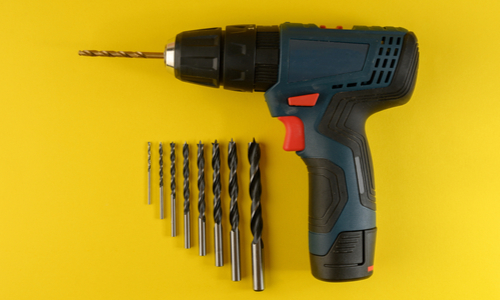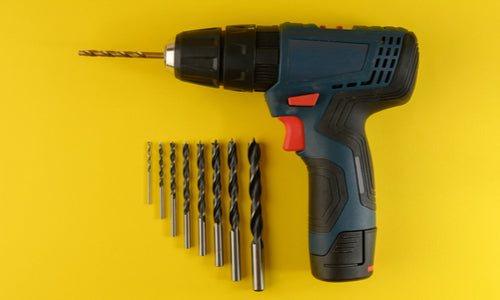It often happens that the owners need to hang something or repair things together. In both cases, holes need to be drilled for this. However, not every drilling tool is ideal for every type of job. It may seem simple, but the world of drilling is vast and exciting. Let's talk a little about drilling tools and their uses for homeowners. According to DrillingAdvisor, different electric drills can handle many DIY jobs around your home.
History of Drilling Tools
More than 37,000 years ago, Homo Sapiens realized the benefits of rotating tools. First, it was a sharp stone that, when turned in the hands, made a hole in other material. About 10,000 years ago, people used bow drills as the first drilling machines. They were used in carpentry and stonework, but also in dentistry and to make fire.
In 221 BC, the Chinese Qin Dynasty invented stirring drills, which were used to drill large diameter holes. In 1885, Isaac Singer built a steam drill, based on the method used by the Chinese. However, the biggest advance in the world of drilling was the invention of the electric drill. It was created by Arthur James Arnot and William Blanch in 1889, but the first drill similar to the ones we have today was patented by Black & Decker.
What do you need a drilling tool for?
Every homeowner needs a drilling tool at some point. For example, let's say you purchased a new hanging shelf for your pre-assembled kitchen cabinet. To mount it on the wall you will need to drill several holes. Also, if you want to attach two items, you will need to drill holes and insert screws.
Always follow the MEP standards ( mechanical, electrical and hydraulic engineering). Make sure you hire a fully qualified engineer for any type of project in your home or commercial location.
Additionally, depending on the type of drill, you can use it to loosen heavy, tight screws. However, it can be difficult to do this with a cordless drill as its batteries do not provide enough power to do so.
Types of Drilling Tools

As mentioned, there are several types of drilling tools. No matter which tool you use, be sure to always wear safety glasses, gloves, and a dust mask. Of course, you should always use good quality tools. So, let's see what the most common types of exercises are.
Drill
A hand drill is the simplest form of drill. They are ideal for pre-drilling holes before placing screws inside. Simply turn the drill left and right until the tip penetrates the wood. Then continue turning the drill to the right until you reach the required depth. These tools are great because they require no power and are very easy to use.
Hand drill and strap
Even though we live in the 21st century, people still use these tools. They are much quieter than electric drills and allow you to drill precise holes. You can use them for wood and soft materials, but even in that case they cannot make deep holes. There are also drills created especially for this type of drilling tool, which allow for greater precision.
Standard Electric Drill
These drill bits are excellent for most fastening jobs. They allow you to secure heavier objects by drilling holes and using screws. There are two types of electric drills: battery-powered drills and those that are cord-powered.
The first ones are good because you don't need to be close to the power source all the time. Plus, no cables are getting in the way. On the other hand, cord-powered drills are often much more powerful.
Drill
Hammer drills are similar to standard models but have an additional “hammering” feature. They are great for drilling through tough materials such as concrete and stone. Many models allow you to switch between hammering and turning, or even use both at the same time.
Drill bench
These units are a little difficult to use for beginners, but they can be invaluable for professional DIYers. The main advantage of these drills is that they allow you to make very precise holes. Furthermore, they tend to produce a lot of energy and can be used in different materials.
Types of drills
In addition to drilling tools, choosing the right drill bit is also of great importance. There are many different types of drills, but we will mention the ones that homeowners use most.
Twisted Bits
These bits are the most used. They are universal and good for most materials, but they are not perfect. Using more specialized bits is always a better option. Additionally, twist drills are excellent for drilling in steel.
Masonry Drill Bits
Masonry drill bits are easy to recognize because the tip is wider than the body. They are excellent for bricks, stones and mortar, but you should always use them with the hammer on. Otherwise, the tip will wear out very soon.
Dowels
These drills always have a sharp tip and their cutting edges are in the opposite direction. They are ideal for drilling clean and precise holes in wood. However, you cannot use them to drill through metal or plastic.
Flat Bits
If you need to drill large holes where other types of drill bits are expensive, flat drill bits are the best solution. They are low cost and low performance and make coarse holes in wood.
The only advantage of flat drills is the price. You should choose them if cleaning the hole is not important and buying expensive drill bits is an unnecessary cost.
Drills
These are low speed, high torque drills. They are energy efficient and produce very clean holes. Additionally, you can use them with most cordless drills if the tool can produce enough torque. However, drill bits are prone to jamming, so you should always buy a few, just in case.
A few words at the end
Choosing the right drilling tool can be tricky if you've never used drill bits before. However, with all the information we mentioned, choosing the right tool becomes much simpler. You will certainly need a drilling tool at some point, so make sure you choose the right tool and don't forget the importance of the right drill bits.

